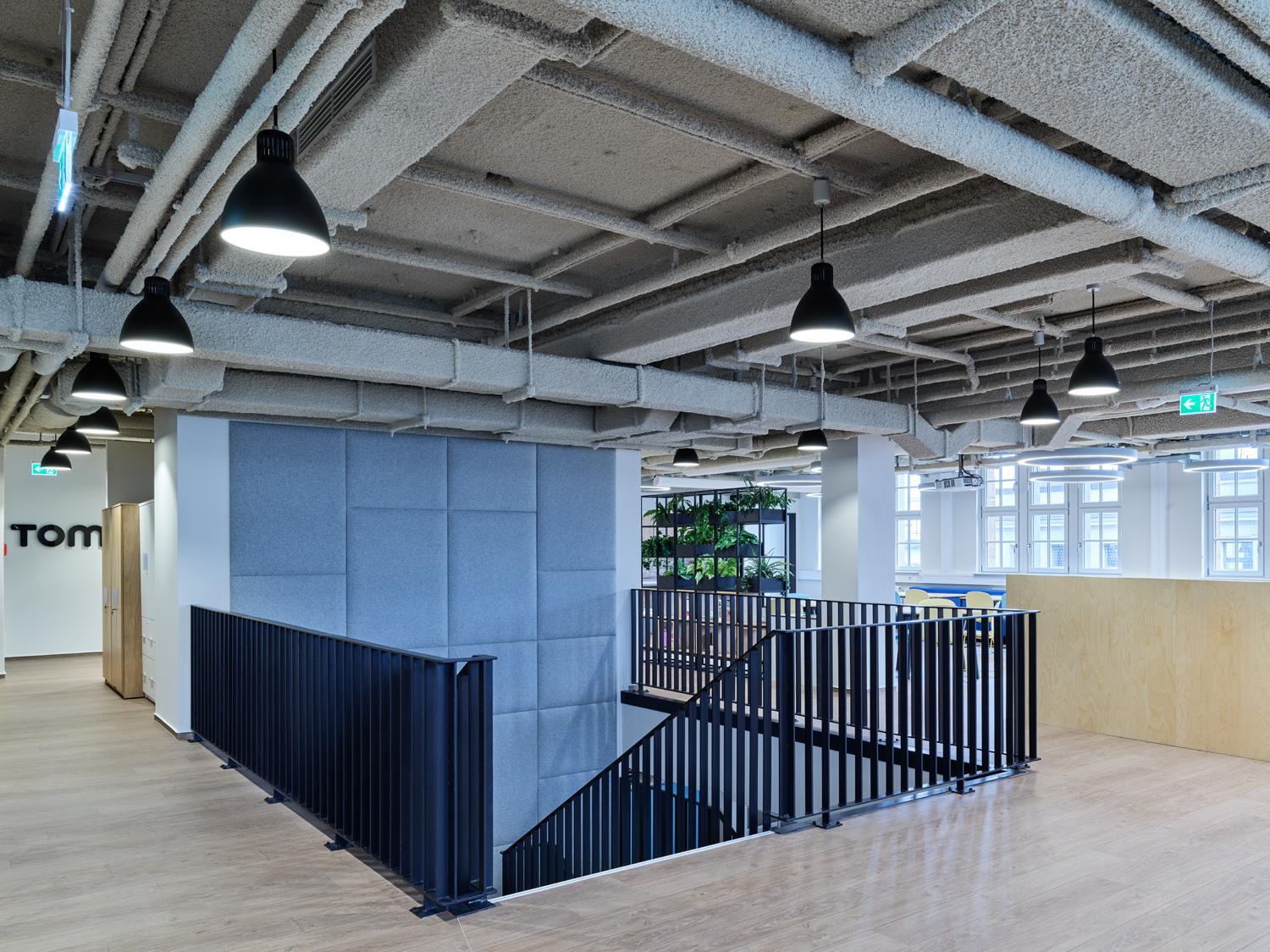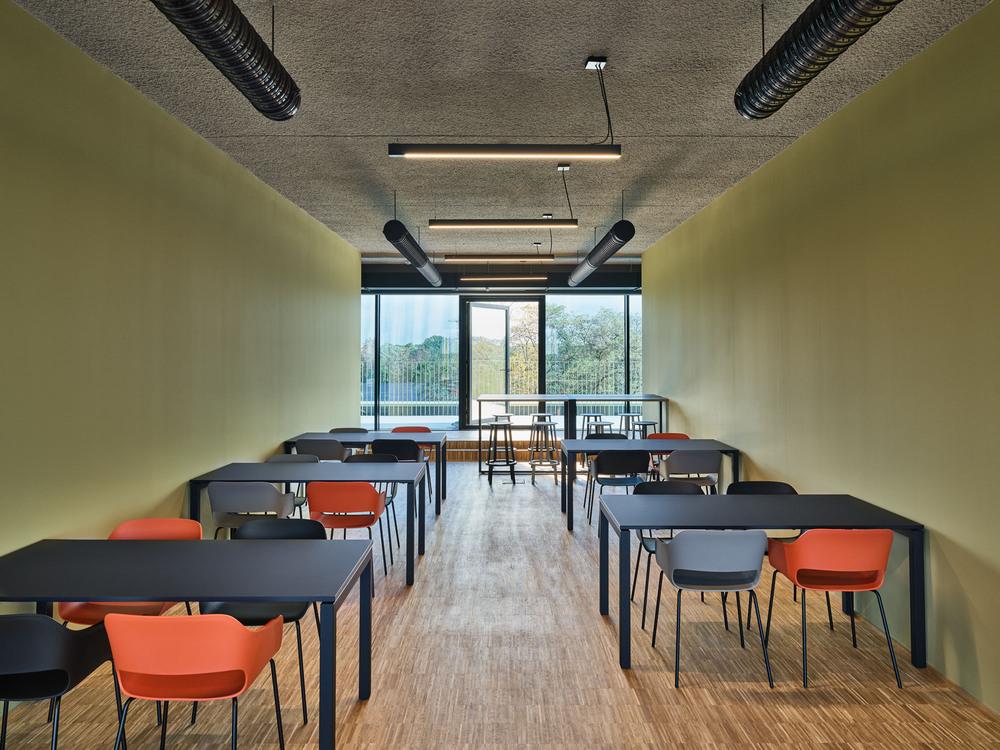Dealing with echo in a room can be frustrating. Whether you're trying to enjoy music, have a productive meeting, or chat with friends, excessive sound bouncing around can make any space uncomfortable. Fortunately, there are plenty of ways to stop echo in a room and create a more pleasant, balanced sound environment. In this guide, we’ll break down the causes of echo and share practical tips on how to stop, reduce, and eliminate echo in a room.

How to stop echo in a room
The cause of echo in a room
When sound waves bounce off hard, flat surfaces like walls, floors, or ceilings create an echo. Spaces with high ceilings, hardwood floors, or minimal furniture are particularly prone to this issue. Materials such as glass, tile, and concrete reflect sound efficiently, which only makes the problem worse. The first step to reducing echo in a room is to identify what's causing it.
Reducing echo in a room
With just a few simple tricks, you minimize echo in a room:
Acoustic panels
Acoustic panels absorb sound waves. They are one of the most effective solutions for eliminating echo in a room. You can install these panels on walls or ceilings. They come in different designs to suit your aesthetic preferences. Position the panels strategically where sound reflects the most for the best results.
Acoustic plaster
Acoustic plaster is a highly effective solution for reducing echo in a room while maintaining a seamless and visually appealing finish. It's directly applied to walls or ceilings, forming an even layer that absorbs sound waves and minimizes reverberation. Our acoustic plaster is particularly suitable for large or irregular spaces where traditional acoustic panels may not fit seamlessly. It offers a smooth, durable finish with excellent sound-absorbing properties. Acoustic plaster can be customized in texture, thickness, and color, making them versatile options for spaces requiring functional and aesthetic acoustic improvements.
Acoustic ceiling tiles
Ceiling tiles are another excellent option for those wondering how to reduce echo in a room. Acoustic ceiling tiles absorb sound and prevent reverberation. They are perfect in rooms with high ceilings, where sound waves have more space to travel. Installing these tiles can create a noticeable improvement in sound clarity, making them a valuable investment for both residential and commercial spaces.
Bookshelves and decorative elements
Surprisingly, bookshelves filled with books can act as effective sound absorbers. The uneven surface of a filled bookshelf disrupts sound waves, reducing their ability to bounce back into the room. Similarly, decorative wall hangings, tapestries, and art installations with fabric components contribute to reducing echo.
Soundproof curtains
Soundproof curtains, made from heavy, dense fabric, are an affordable and practical way to eliminate echo in a room. These curtains not only block outside noise but also absorb internal sound reflections. Hanging them in large windows or bare walls reduces echo in a room
Soft furniture
Introduce soft furnishings to eliminate echo in a room. Carpets, rugs, curtains, and upholstered furniture help absorb sound waves, preventing them from bouncing around the space. Thick, plush materials are particularly effective in reducing echo room challenges. If your space feels overly reflective, adding more fabric-based elements can make a noticeable difference in sound quality.
Furniture placement to stop echo in a room
Furniture placement plays a crucial role in reducing echo in a room. Large pieces of furniture, such as sofas, armchairs, and bookcases, can act as barriers that absorb and disrupt sound waves. Arranging furniture strategically, especially in larger spaces, helps to break up sound pathways and minimizes echo in a room.
Incorporating plants to eliminate echo in a room
Indoor plants enhance a space visually and help reduce echo in a room. Plants with large, dense leaves can absorb sound waves, specifically when grouped. They are a natural and eco-friendly solution for those looking to reduce echo room problems while adding greenery to their space.
Combine multiple solutions
No single method may eliminate echo in a room, especially in spaces with challenging acoustics. Combining multiple solutions, such as soft furnishings, acoustic panels, and strategic furniture placement, often yields the best results. Tailoring these solutions to the specific characteristics of your space ensures a practical approach to reducing echo room problems.
Consult an acoustic professional complex spaces
Professional help may be necessary to reduce echo in larger or uniquely shaped spaces. Acoustic experts can assess the room's acoustic profile and recommend tailored solutions, including advanced materials and strategic installations.
Different rooms, different acoustic challenges
Every room comes with acoustic challenges, and the approach to reducing echo needs to be tailored to these unique characteristics. Rooms with hardwood floors often suffer from sound reflections due to their smooth, hard surfaces. High ceilings amplify echo issues as sound waves travel longer distances. Recording studios, on the other hand, require precise control over acoustics to achieve crisp, clean audio. Each of these environments requires a specialized approach to address their unique acoustic needs effectively.
How to reduce echo in a room with hardwood floors?
Rooms with hardwood floors often struggle with excessive echo due to their hard, reflective surfaces. Adding thick rugs, carpet runners, or acoustic panels can help absorb sound. Soft furnishings like curtains and cushions can further enhance the effect, reducing reverberation significantly.
How to reduce echo in a room with high ceilings?
High ceilings can make echo problems even more noticeable. Acoustic ceiling tiles, suspended panels, or baffles are effective solutions. Adding fabric drapes or tall plants can also help break up sound waves, creating a more controlled acoustic environment.
How to reduce echo in a room for recording?
Recording spaces require fine-tuned acoustics to capture clear, professional-quality sound. Acoustic panels and foam are highly effective at absorbing reflections. Acoustic spray or plaster can also be applied for a seamless, sound-absorbing surface that eliminates unwanted echoes.
Eliminating echo in a room
Echo in a room doesn't have to be an ongoing problem. With the right combination of soft furnishings, acoustic panels, and modern solutions like acoustic spray or plaster, you can create a space that’s both visually appealing and acoustically balanced.
Acoustic solutions by Acosorb
Acosorb works closely with architects and clients to deliver tailored acoustic solutions for new construction, renovation projects, and existing spaces. Our expertise ensures that each project benefits from optimal sound performance, seamlessly blending functionality with aesthetic appeal. By understanding the unique requirements of every space, we create environments where sound quality enhances comfort and productivity.







